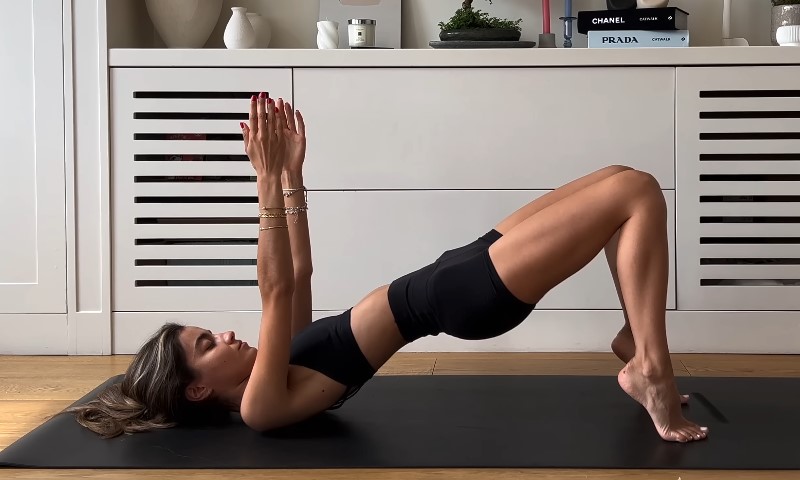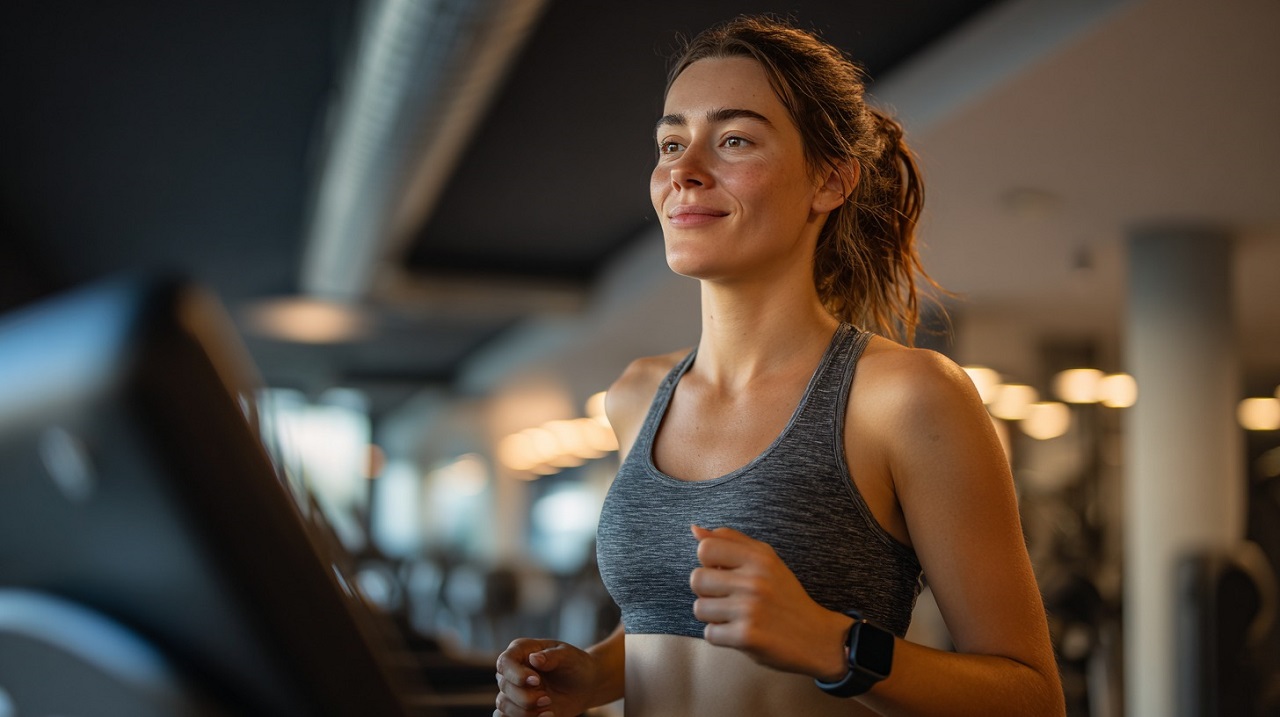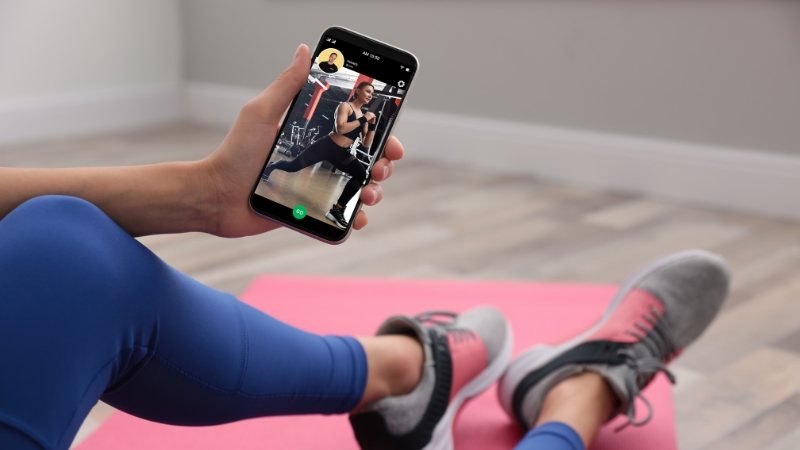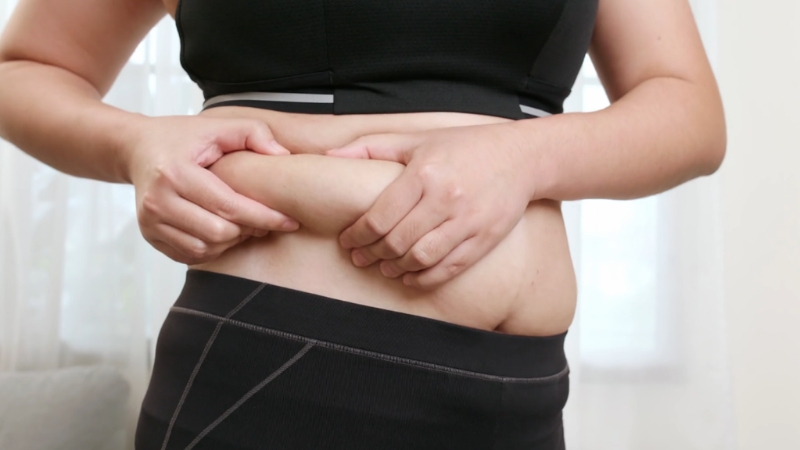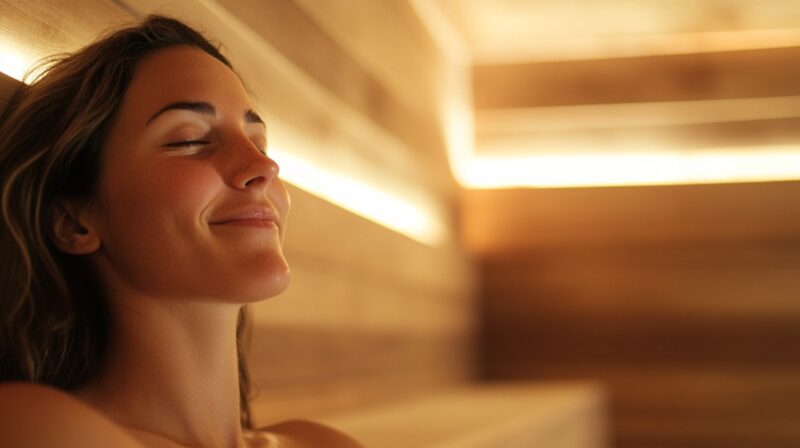
Share Post:
There’s something undeniably satisfying about walking into a sauna after a hard workout. You’ve pushed your body, your muscles are buzzing, and the idea of sitting still in dry, comforting heat just hits right.
But beyond that immediate wave of calm, sauna use after exercise can do a whole lot more than just feel good.
It can help you bounce back faster, feel less sore, sleep better, and maybe even keep you from getting sidelined with injuries.
It doesn’t matter if you’re training for your next triathlon or just hitting the gym to feel stronger, adding sauna time to your recovery routine could be a smart move. Let’s break down why.
What Kind of Sauna Are We Talking About?
Not all heat is created equal—and not all saunas work the same way.
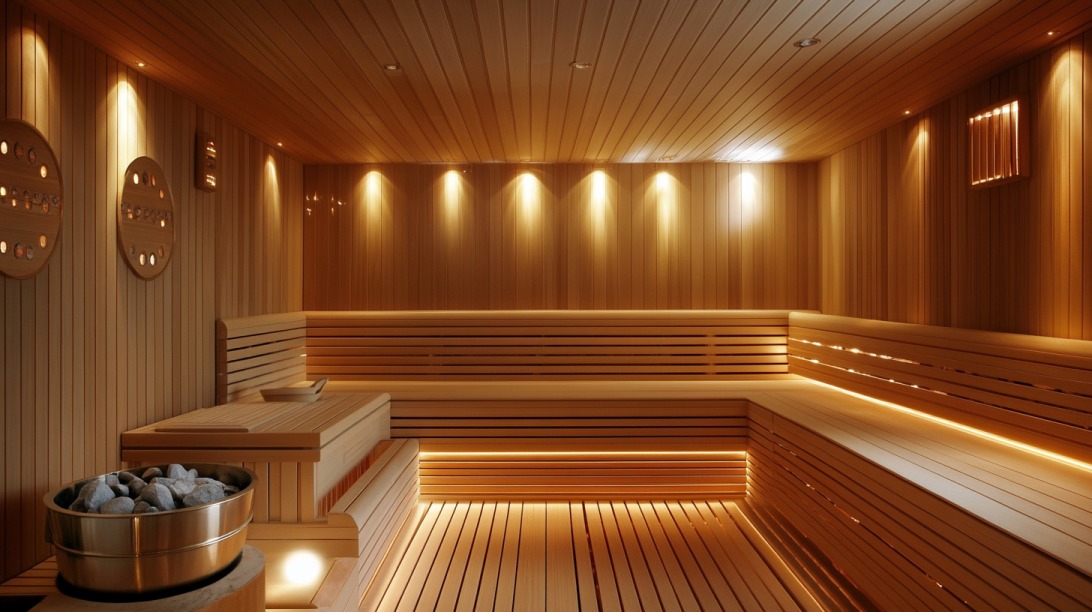
Traditional Dry Saunas
This is your classic Finnish-style sauna. Think wooden walls, high benches, and that intense dry heat (usually between 150°F and 195°F or 65°C to 90°C).
Water tossed on heated rocks produces occasional steam, but the air stays mostly dry. Great for a deep sweat and that timeless sauna experience.
Infrared Saunas
A more modern take, infrared saunas heat your body directly using infrared light. The air stays cooler—usually 120°F to 140°F (49°C to 60°C), but the heat penetrates deeper into your tissues. That’s one reason infrared saunas are often favored by people focusing on recovery and pain relief.
Steam Rooms
Less common for post-exercise recovery but still worth a quick mention, steam rooms use moist heat. They’re great for clearing sinuses and skin hydration but may not deliver the same circulatory boost as dry or infrared options.
What Happens in Your Body After a Workout?
Every time you train hard—whether lifting weights, running sprints, or even going deep into yoga—you’re breaking your muscles down just a bit. That’s a good thing.
Those tiny micro-tears in your muscle fibers are what your body rebuilds to make you stronger. But to repair that tissue efficiently, your body needs oxygen, nutrients, and time.
This is where the sauna comes in.
1. Boosted Circulation = Faster Muscle Repair
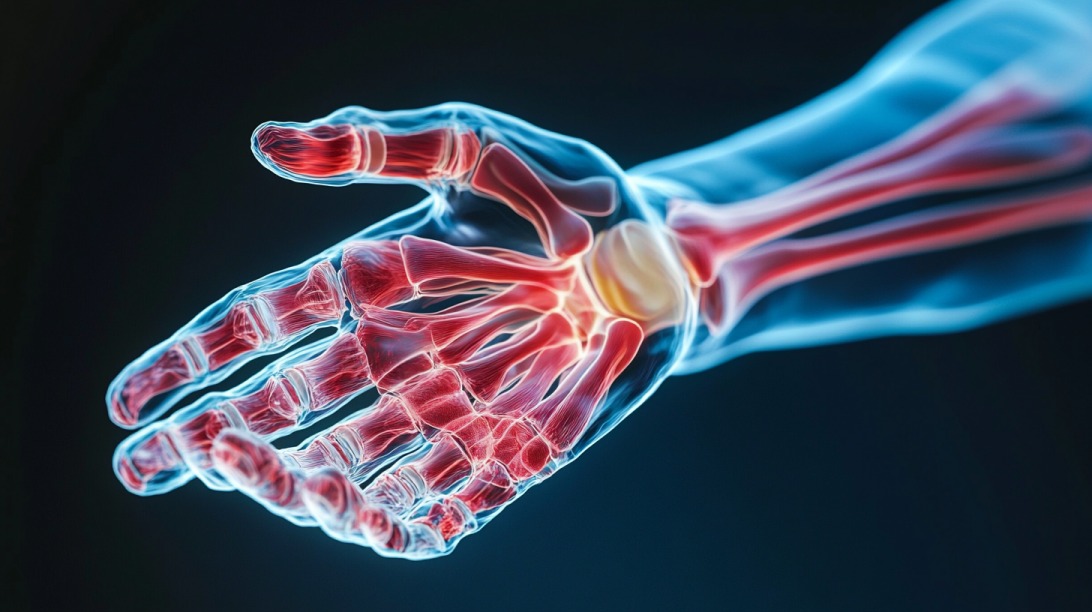
Heat causes blood vessels to expand, improving circulation. More blood flow means more oxygen and nutrients headed straight to your tired muscles.
In a controlled study published in SpringerPlus, athletes who used infrared saunas after endurance workouts recovered better neuromuscular function—specifically jumping ability—than those who didn’t. That’s not a small win. It means your muscles can perform better sooner, which is key if you’re training multiple times a week.
Another study focused on basketball players found those who did resistance workouts and then recovered in an infrared sauna performed significantly better in countermovement jumps 14 hours later compared to passive recovery.
2. Muscle Soreness? Sauna to the Rescue
Anyone who’s woken up two days after leg day barely able to walk knows the pain of DOMS (delayed onset muscle soreness). While stretching and massage guns help, heat therapy is proving to be a serious ally.
Researchgate study showed that using a sauna cut muscle soreness by up to 47% in the first 24 hours after training. That’s a huge improvement—especially if you want to stay on track with your workouts.
Even anecdotal stories back it up. In a personal account shared by Verywell Health, someone doing daily sauna sessions reported needing fewer recovery tools and feeling significantly less soreness after just two weeks.
3. Deep Relaxation = Less Cortisol, More Recovery

Hard workouts can spike cortisol, the stress hormone. While that’s part of the process, staying in that stressed-out state too long can interfere with recovery. Sauna sessions, especially when done right after exercise, help bring things back into balance.
You’re in a quiet, warm environment. Your muscles relax. Your breathing slows down. Endorphins kick in. That’s not just about feeling good—it’s a recipe for better recovery, both physically and mentally.
Men’s Health and Sports Injury Clinic both highlight that the post-exercise sauna effect includes improved mental clarity and lower stress levels. You leave the gym not just physically tired, but mentally reset.
4. Cardio Support Without More Cardio
Interestingly, sitting in a sauna mimics some of the effects of low-intensity aerobic activity. Your heart rate increases, sometimes by as much as 30%—and that’s a win for cardiovascular conditioning.
That elevated heart rate boosts circulation and trains your heart similarly to light exercise. Over time, this can contribute to overall heart health, endurance, and better oxygen transport during future workouts.
5. Better Sleep = Better Gains

If you’re not sleeping well, you’re not recovering well. Period.
The relaxing effects of sauna use—especially when done in the evening—can prime your body for better sleep. Your body cools down after exiting the heat, signaling it’s time for rest. Some people swear by a 20-minute sauna after evening workouts to help them fall asleep faster and sleep deeper.
And since your body does most of its tissue repair during deep sleep, better sleep directly translates to better muscle growth and energy the next day.
6. Prevent Injuries Before They Happen
Tight muscles are risky muscles. Whether you’re sprinting, squatting, or just doing repetitive movements, tightness increases your chance of pulling something.
Heat loosens up tissue, improving flexibility and range of motion. That’s why Sports Injury Clinic recommends saunas to keep muscles supple and reduce the odds of injury. Think of it as keeping your engine properly lubricated—you’re less likely to break down on the road.
7. Extra Perks You Might Not Expect

Besides the big muscle-related wins, regular sauna use can bring along a few side benefits worth noting:
- Skin Boost – Sweat opens pores and can help cleanse your skin, though it’s essential to rehydrate and wash off properly afterward.
- Mild Detox Support – While your liver and kidneys do the heavy lifting, sweating can help eliminate trace toxins.
- Slight Calorie Burn – Not enough to skip a workout, but you do burn extra calories from increased heart rate and sweating.
So How Do You Use a Sauna for Recovery the Right Way?
If you’re going to make saunas part of your fitness routine, it helps to get the details right. Here’s a cheat sheet:
| Aspect | Recommendation |
| Duration | Start with 15–20 minutes. Listen to your body. |
| Hydration | Drink water before and after—seriously, don’t skip this. |
| Timing | Use it right after your workout for best results. |
| Type | Infrared for deeper heat, traditional for classic dry warmth. |
| Frequency | 2–3 times a week is solid. More isn’t always better. |
When to Be Cautious
As with anything health-related, a little common sense goes a long way.
- If you have a heart condition or other medical issues, check with your doctor before using a sauna.
- Don’t combine saunas with alcohol or stimulants—they increase the risk of dehydration and overheating.
- Watch out for signs of lightheadedness, nausea, or dizziness—those are cues to exit immediately.
Also, timing matters. A 2019 study in the International Journal of Sports Physiology and Performance noted that sauna use right after certain high-intensity sessions (like swimming sprints) could actually slow recovery in specific cases.
So if you’re training at extreme levels, experiment a bit and monitor how your body responds.

Who’s Using Saunas and Why It Works
Pro athletes across sports, from basketball to cycling, use saunas as part of their regular recovery routines. The Frontiers in Physiology study on basketball players showed measurable performance improvements with infrared sauna use post-resistance training.
But even everyday athletes are seeing results. Take the user experience cited in Verywell Health: after just two weeks of daily sessions, the individual not only reduced soreness but also didn’t need massage tools as much and felt more recovered heading into workouts. That’s the kind of consistency that builds progress.
If you’re serious about recovery and wellness, adding a sauna to your own home might be worth considering. According to Christoffer Arfert of Select Saunas, “Bringing the sauna experience home allows for consistent recovery and mental reset—without the need for a gym or spa visit.” Whether you prefer traditional or infrared, having a sauna in your personal space can make this powerful recovery tool even more accessible.
Sweat Smarter, Not Just Harder
The benefits of hitting the sauna after a workout go far beyond that satisfying post-sweat glow. From cutting soreness nearly in half to speeding up muscle repair and improving sleep, a sauna session can seriously upgrade how your body bounces back.
It’s not a magic pill—and it shouldn’t replace solid nutrition, smart training, or proper rest—but when used wisely, sauna recovery can help you train harder, more often, and with less downtime. And that’s the sweet spot most people are after.
So go ahead, add a session or two into your week. Just bring a towel, drink your water, and let the heat do its thing.
References
- springerplus.springeropen.com – Effects of far-infrared sauna bathing on recovery from strength and endurance training sessions in men
- researchgate.net – Effect of post-exercise sauna bathing on the endurance performance of competitive male runners
- verywellhealth.com – 3 Sauna Benefits I Noticed After 2 Weeks of Daily Use
- menshealth.com – 10 Benefits of a Post-Workout Sauna (and, a Few Risks)
- sportsinjuryclinic.net – 5 Benefits of a Sauna After Exercise
Related Posts:
- Calf Muscle Strains - Symptoms, Causes, and Recovery…
- How to Use Muscle Rollers for Recovery, Flexibility,…
- 5 Best Nighttime Habits to Improve Muscle Repair and…
- HIIT in Your 30s and 40s: Benefits, Risks, and What…
- Is Drinking Raw Eggs a Myth or a True Muscle…
- Best Post-Workout Recovery Hacks for Faster Muscle Repair




